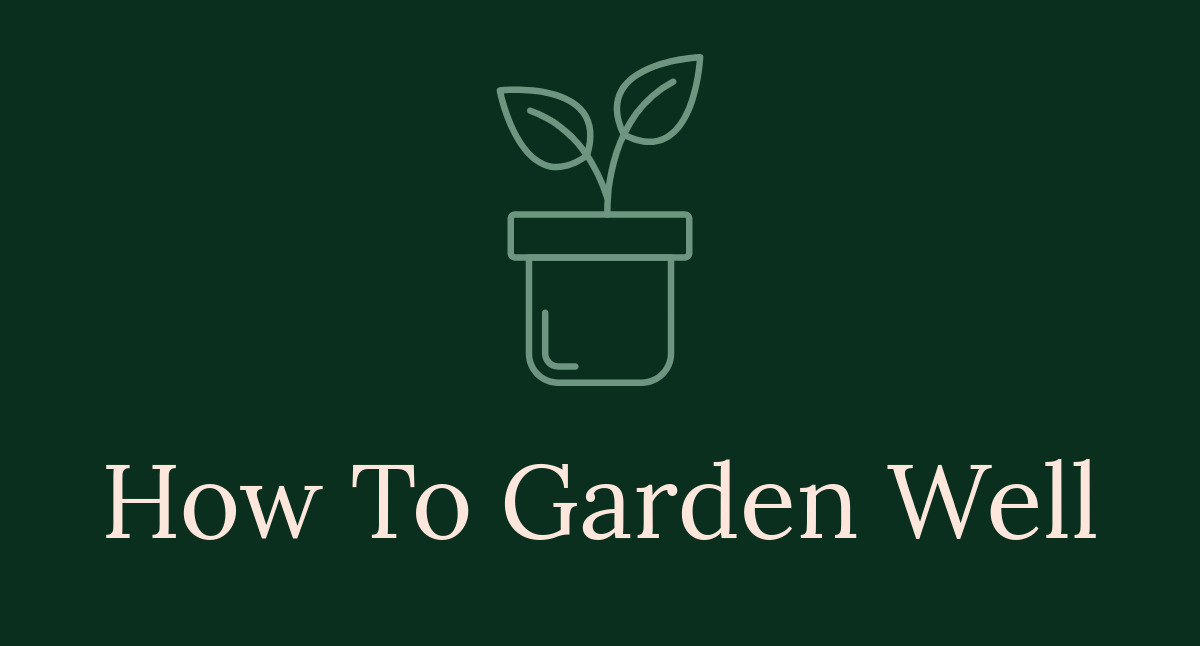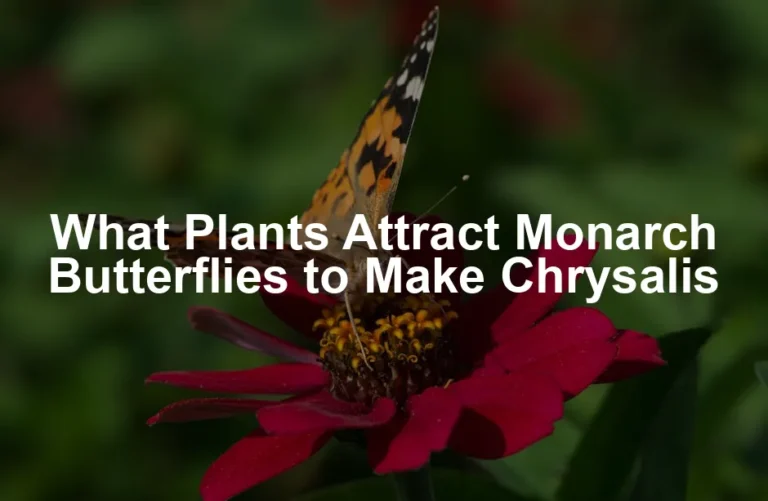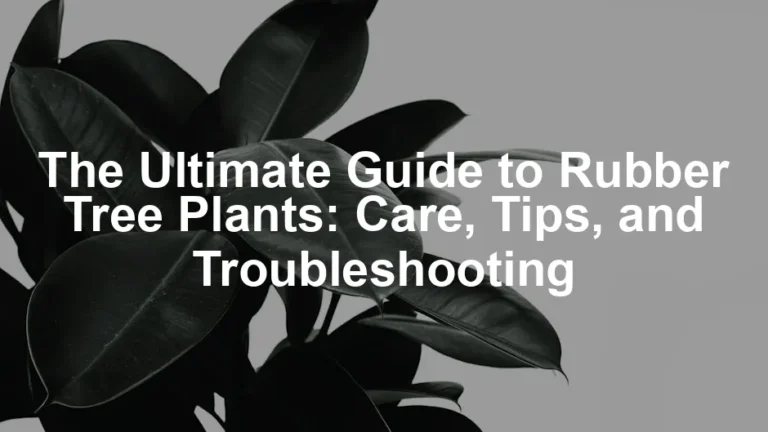
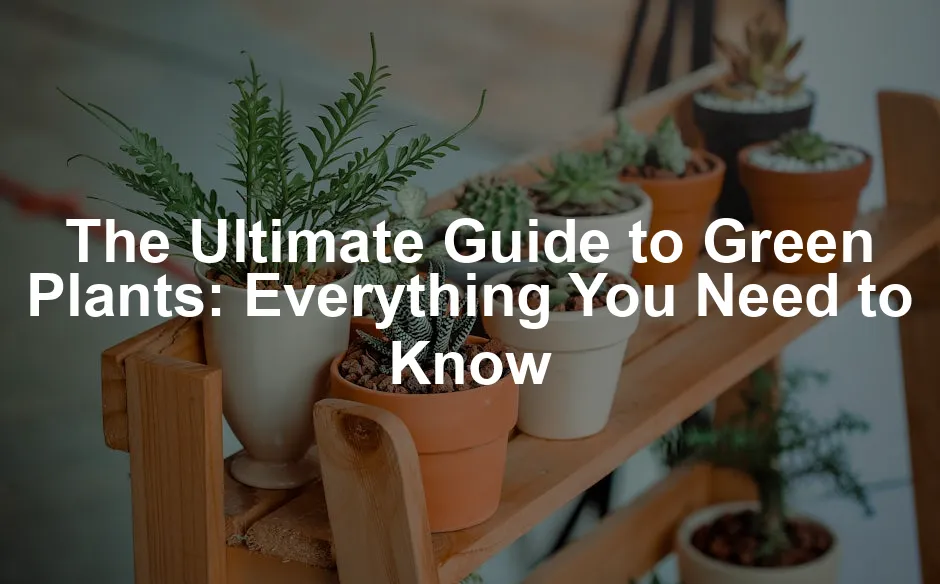
The Ultimate Guide to Green Plants: Everything You Need to Know
Introduction
In a world where air quality is dwindling and stress levels are soaring, green plants emerge as the unsung heroes of our homes and offices. These leafy companions not only spruce up our living spaces but also purify the air and boost our mood. Imagine stepping into a room adorned with vibrant greens, instantly feeling more relaxed and connected to nature.
Green plants are more than just pretty faces. They filter out toxins and release oxygen, making our environments healthier. Who wouldn’t want a natural air purifier right in their living room? The psychological benefits are equally impressive. Studies show that having plants around reduces stress and increases productivity. So, the next time you find yourself overwhelmed, just take a moment to appreciate your leafy friends.
Whether you’re a seasoned plant parent or a complete novice, the world of green plants is vast and enchanting. You might be wondering which plants are perfect for your home or how to care for them. Fear not! This guide covers everything you need to know about green plants, from their benefits and care tips to the best types to choose for your spaces.
Join us as we embark on this green adventure. We’ll explore the diverse types of green plants, their amazing advantages, and practical tips to ensure they thrive. Plus, we’ll tackle common pests and diseases that may threaten your green companions. By the end of this guide, you’ll be equipped with all the knowledge you need to cultivate your very own indoor jungle. Let’s dive into the wonderful world of green plants and discover how they can transform your life for the better!
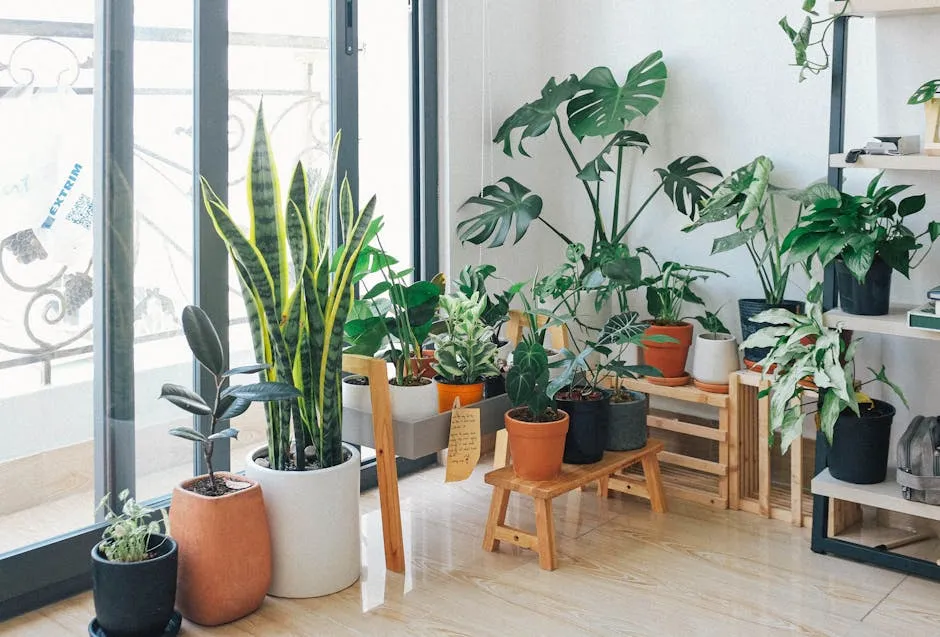
Summary of Key Points
Green plants are more than just decorative items; they offer numerous benefits that enhance our well-being and the environment. This guide will explore the following key aspects:
- The various types of green plants and their unique characteristics.
- The mental and physical health benefits associated with having green plants in your home or workspace.
- Practical tips for selecting, caring for, and propagating green plants.
- Common pests and diseases that can affect green plants, along with effective management strategies.
- Sustainable practices to ensure your green plants thrive while being environmentally friendly.
Through this comprehensive exploration, you’ll discover how to cultivate your own indoor jungle and enjoy the myriad benefits these green companions bring.

Benefits of Green Plants
Improved Air Quality
Green plants are nature’s little air filters. They absorb toxins and release oxygen. This process is crucial for maintaining a healthy environment. Imagine walking into a room and breathing in fresher air. That’s the magic of plants!
Certain plants shine brighter when it comes to purification. The Snake Plant is a superstar here. It’s resilient and thrives in low light. Plus, it releases oxygen at night—perfect for your bedroom. Then there’s the Spider Plant, which not only looks great but also excels at filtering formaldehyde and xylene. Add a few of these to your space, and your air quality will thank you. For more information on improving air quality indoors, check out the Best plants for improving air quality indoors.
Looking to elevate your plant game even further? Consider adding an Indoor Gardening Kit to your collection. It’s a great way to start growing your own herbs and vegetables right in your kitchen, ensuring you have fresh ingredients at your fingertips!
Improving air quality with plants can significantly enhance your living environment. Best plants for improving air quality indoors

Mental Health Benefits
Let’s talk about your mental state. Life can get overwhelming, right? Studies show that having plants around can significantly reduce stress. One study found that people working in offices with plants reported a 15% increase in productivity. Yes, you read that right!
Just looking at green plants can lift your mood. They create a calming atmosphere. Imagine working at a desk surrounded by greenery. It’s much better than staring at a blank wall. So, if you want to up your game, bring in some green friends. They might be the boost you need to power through that next project.
Don’t forget to document your plant journey! A Plant Care Journal can help you keep track of watering schedules, light conditions, and growth progress, making your plant care experience even more rewarding!
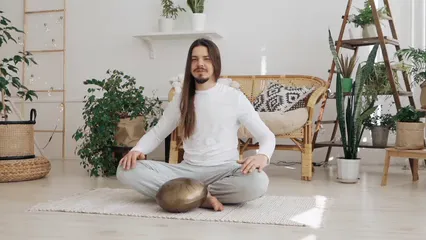
Aesthetic Appeal
Now, let’s get artsy. Green plants are the ultimate decor accessory. They enhance any space, turning dull corners into vibrant showcases. A well-placed plant can make a room feel alive.
Think about it: how about a Pothos cascading down a bookshelf? Or a Peace Lily sitting elegantly on your coffee table? The options are endless! You can even create a mini indoor garden in your bathroom. Just remember to choose plants that thrive in humidity—like ferns. For more on caring for Peace Lilies, check out the ultimate guide to large peace lily plant care.
To really elevate your plant display, consider investing in a Decorative Plant Stand. It adds height and dimension to your indoor garden, making your plants the star of the show!
Peace Lilies not only enhance aesthetics but also require specific care to thrive. the ultimate guide to large peace lily plant care
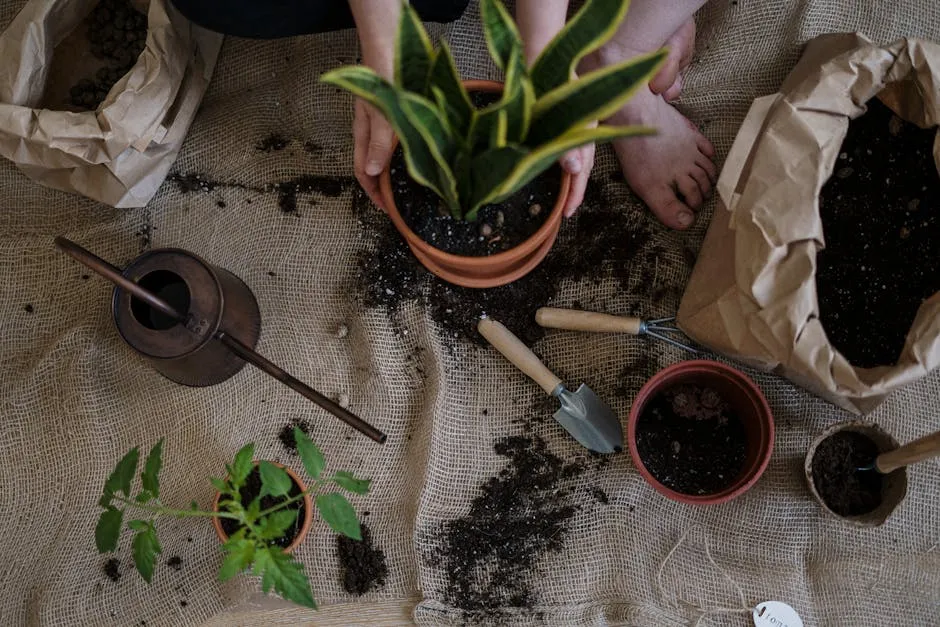
Incorporating plants into your decor is easier than you think. Hanging planters, terrariums, or simple pots can all add flair. So don’t shy away from mixing and matching. Your home will feel like a relaxing oasis in no time!
Care Tips for Green Plants
Watering Guidelines
Watering plants can feel like a guessing game, but it doesn’t have to be! A simple rule is to check the top inch of soil. If it feels dry, it’s time to water. For some, this is a daily task, while others need a little less attention. Always remember, overwatering is a common mistake. It can drown your plants faster than you can say “Oops!”
Drainage is crucial. Ensure your pots have holes at the bottom. This allows excess water to escape, preventing root rot. Speaking of pots, choose those made from breathable materials like terracotta. They help the soil dry out between waterings, keeping your plants happy and healthy.
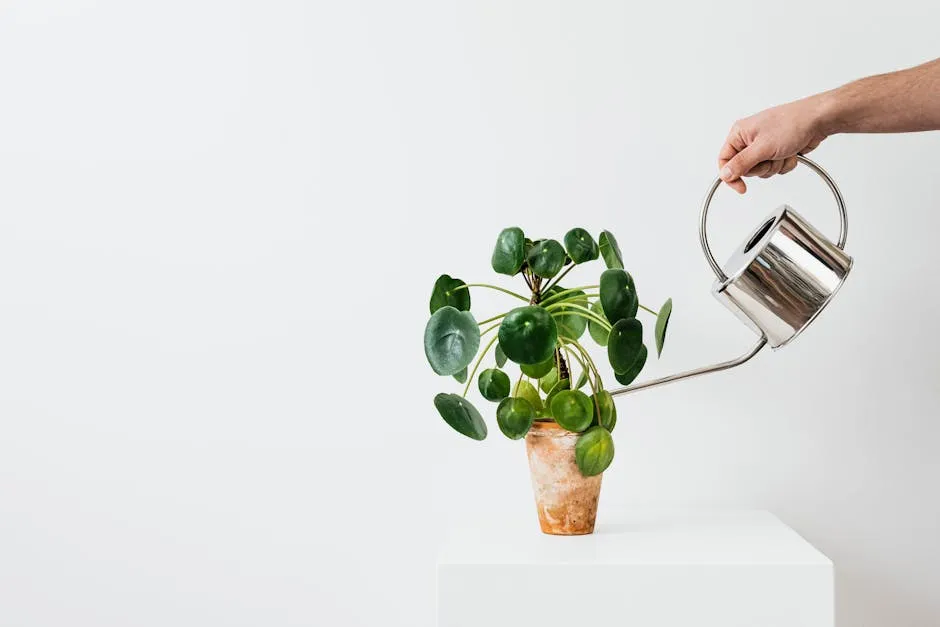
Light Requirements
Light is the lifeblood of your green friends. Different plants have different needs. Some crave bright, indirect light, while others thrive in low-light conditions. The Snake Plant, for example, is a champion in the shade. On the flip side, succulents bask in full sun.
Finding the right spot for your plants is key. Observe how light moves through your home. A south-facing window usually gets the most light, while north-facing ones are shadier. If you see your plants stretching towards the light, they’re likely asking for a brighter spot. Don’t be afraid to experiment until you find their happy place!
To help monitor your plants’ light needs, a Indoor Plant Light can provide the perfect illumination for those low-light areas!
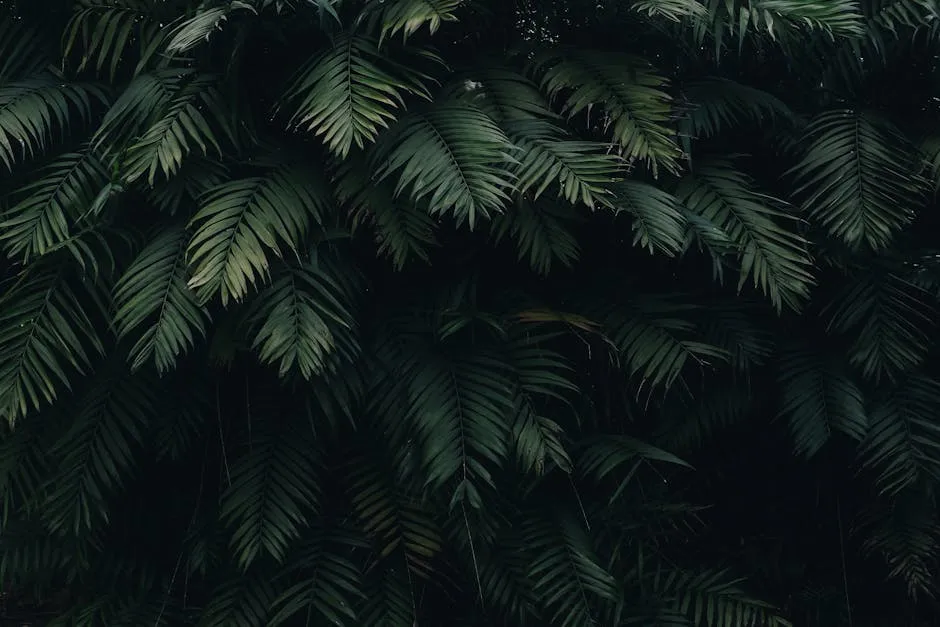
Fertilization and Soil
Fertilizing might sound daunting, but it’s simpler than it seems. There are various types of fertilizers available, including mineral-based ones like Bi Florin for green plants. This specific fertilizer boosts growth and prevents chlorosis, thanks to its nitrogen-rich formula.
When to fertilize? A good rule of thumb is to feed your plants every 7 to 14 days from March to October. In winter, cut back to once a month. Always dilute the fertilizer in water—5 ml per liter is a great starting point!
As for soil, choose a potting mix that suits your plants. Well-draining soil helps prevent water retention, keeping roots in good shape. Always check the needs of each plant; some prefer specific soil types, which can make all the difference in their growth. For more on soil amendments, visit Best soil amendments for vegetable gardens.
Choosing the right soil amendments can significantly impact your plants’ health. Best soil amendments for vegetable gardens

Common Pests and Diseases
Identifying Common Issues
Even the most dedicated plant parent faces challenges. Common pests like aphids and spider mites can sneak into your leafy paradise. Check the undersides of leaves for tiny bugs or webbing. If you spot sticky residue, that’s a telltale sign of aphids.
Diseases can be sneaky too. Root rot is a common problem, often caused by overwatering. Symptoms include yellowing leaves and a mushy stem. If your plant is looking sad, check the roots! Healthy roots should be firm and white. If they’re brown and mushy, it’s time to say goodbye and learn from the experience.
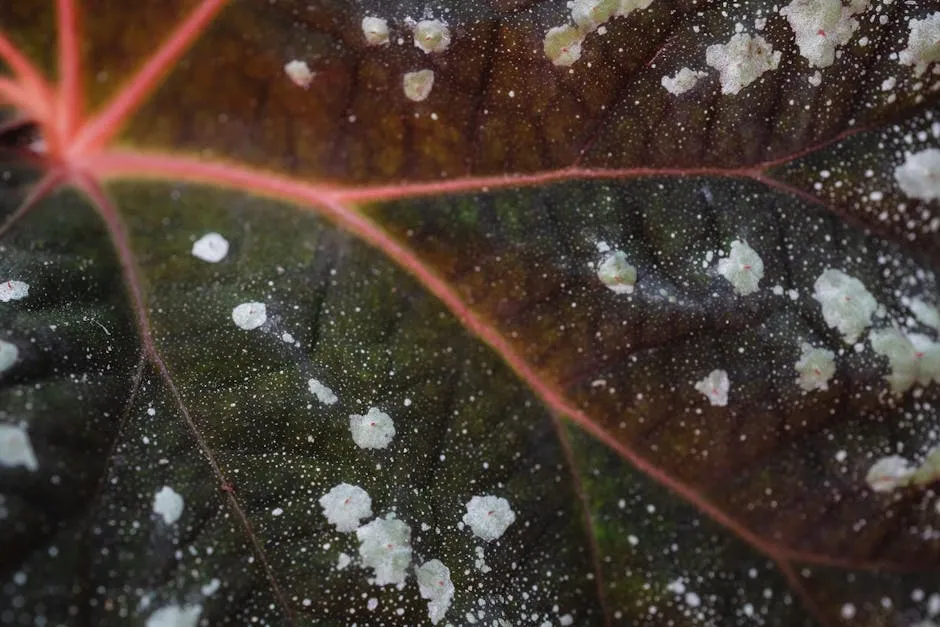
Management Strategies
Pest control can be organic or chemical, depending on your preference. For an eco-friendly approach, try neem oil or insecticidal soap. They’re effective yet gentle on your plants. You can find Neem Oil and Insecticidal Soap easily on Amazon!
To prevent pests, keep your plants clean. Wipe leaves regularly to remove dust, making it harder for pests to settle in. Regular inspections can help catch issues early. When it comes to diseases, proper watering and good airflow are your best friends. Avoid overcrowding plants and ensure they have enough space to breathe.
Caring for green plants is a rewarding journey. With a few simple tips, you can nurture a thriving indoor garden filled with life and vibrancy!

Sustainable Practices for Plant Care
Eco-Friendly Fertilizers
Using sustainable fertilizers is vital for nurturing green plants. These products enrich the soil while protecting the environment. One excellent option is the mineral-based fertilizer, Bi Florin. This gem is a multi-component fertilizer designed specifically for green plants. It’s packed with nitrogen, which helps prevent chlorosis—a condition that turns leaves yellow and unhappy.
Bi Florin is easy to use. Just mix 5 ml of the fertilizer with one liter of water. You’ll want to apply it every 7 to 14 days from March to October. In winter, scaling back to once a month keeps your plants fed without overwhelming them. This fertilizer not only supports healthy growth but also ensures that your plants thrive beautifully. By choosing eco-friendly options, you’re not just feeding your plants; you’re also feeding the planet.

Water Conservation Techniques
Water conservation is essential in plant care. With climate change, every drop counts. Here are some practical methods to save water while keeping your plants happy.
First up is drip irrigation. This technique delivers water directly to plant roots, minimizing waste. It’s efficient and helps prevent overwatering. Plus, you can set it on a timer for hassle-free watering! To learn how to set up a drip irrigation system, visit building a DIY drip irrigation system.
Implementing water conservation techniques can greatly enhance your gardening practices. building a DIY drip irrigation system

Another great method is using greywater. This is the water from your sinks, showers, or washing machines. Instead of letting it go down the drain, capture it in a bucket and use it for your plants. Just make sure the water is free from harsh chemicals.
Mulching your plants also conserves water. It keeps the soil moist by reducing evaporation. Plus, it looks nice! These simple strategies not only promote healthy plants but also help you contribute to a more sustainable future. Embrace these practices and watch your green friends flourish while conserving precious resources!

Conclusion
Incorporating green plants into your life is not just a trend; it’s a commitment to enhancing your well-being and that of the environment. These leafy companions do wonders for our mental health and air quality. Imagine basking in the tranquility of your green sanctuary, where each plant whispers “relax” as you pass by.
Understanding the benefits, care, and sustainable practices associated with green plants allows you to cultivate a thriving indoor jungle. From purifying the air to boosting your mood, these plants are your silent partners in a healthier lifestyle. Not to mention, they add a splash of color to your space, making it feel alive and vibrant.
So go ahead, embrace your inner plant parent! Start small, pick a few easy-to-care-for plants, and watch as they bring joy into your life. The green revolution is waiting for you—let’s get growing!
FAQs
What are the best low-maintenance green plants for beginners?
Starting your plant journey? Here are some easy-care options: – Snake Plant: Thrives on neglect and tolerates low light. – Pothos: A resilient climber that’s nearly indestructible. – ZZ Plant: This beauty needs little water and can flourish in low light. – Spider Plant: Hardy and adaptable, perfect for beginners. – Peace Lily: Offers lovely blooms and tolerates low light.
How often should I water my indoor plants?
Watering frequency depends on the plant type and environment. Generally, water when the top inch of soil feels dry. Some plants, like succulents, need less frequent watering. Factors influencing watering include humidity, temperature, and pot size. Always remember, less is more when it comes to watering!
Can I propagate my green plants at home?
Absolutely! Many plants can be propagated easily. For example, Pothos can be cut and placed in water until roots develop. Snake Plants also propagate through leaf cuttings. Just ensure you use healthy stems and provide proper care until they establish roots.
Do indoor plants really improve air quality?
Yes, they do! Studies show that indoor plants can remove toxins and improve air quality. For instance, plants like the Snake Plant and Spider Plant effectively filter common pollutants. Having these green friends around can lead to a fresher, healthier environment.
What is the best fertilizer for green plants?
Different plants have varying fertilizer needs. One great option is the mineral-based fertilizer, Bi Florin. This fertilizer is rich in nitrogen, which helps prevent chlorosis while promoting vibrant growth. Use it every 7 to 14 days during the growing season for best results. Always follow the instructions for dilution and application to keep your plants thriving.
Please let us know what you think about our content by leaving a comment down below!
Thank you for reading till here 🙂
All images from Pexels
